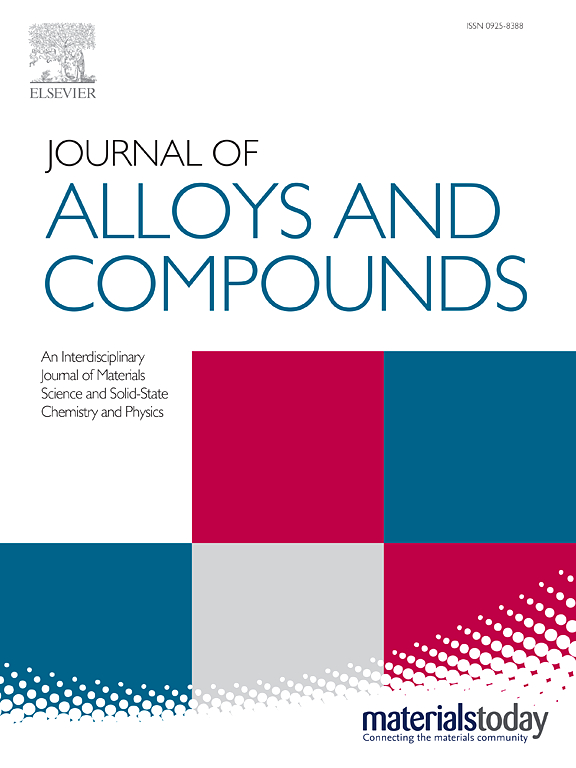Construction of crystalline/amorphous heterostructures to enhance the supercapacitor performance of a high-entropy sulfide
IF 5.8
2区 材料科学
Q2 CHEMISTRY, PHYSICAL
引用次数: 0
Abstract
High-entropy materials show promising potential as electrode materials for supercapacitors (SCs) due to their high-entropy effect. Currently, most research focuses on high-entropy materials made from a single substance, while studies on high-entropy composite materials are limited, presenting a promising area for future investigation. In this study, hollow sphere high-entropy sulfides (HESs) of (FeCoNiCuZn)S2 were prepared from metal nitrates and glycerol by solvothermal and sulfurization methods. Next, a layer of NiCoB (NCB) was constructed on the surface of HESs by chemical precipitation method, resulting in x-NCB@HES heterostructures with various NCB contents. When the NCB content was 0.1 (x = 0.1), the heterostructure exhibited the best electrochemical performance. The 0.1-NCB@HES composite demonstrated a specific capacitance of 1239.1 F·g−1 in a 3 M aqueous KOH solution, surpassing the capacitance of HES at 512.67 F·g−1 and that of NCB at 995.78 F·g−1. After 8000 cycles, the capacity of 0.1-NCB@HES remained at 78.11 % of the initial capacitance. Kinetic studies revealed that capacitance control governs energy storage in NCB@HES. When using 0.1-NCB@HES as the positive electrode and activated carbon (AC) as the negative electrode, the assembled 0.1-NCB@HES//AC asymmetric SC could provide a specific capacitance of 192.53 F·g−1, with an energy density of 60.16 Wh·kg−1 at a power density of 749.91 W·kg−1. This study provides an effective method to enhance the electrochemical performance of high-entropy transition metal sulfides.求助全文
约1分钟内获得全文
求助全文
来源期刊

Journal of Alloys and Compounds
工程技术-材料科学:综合
CiteScore
11.10
自引率
14.50%
发文量
5146
审稿时长
67 days
期刊介绍:
The Journal of Alloys and Compounds is intended to serve as an international medium for the publication of work on solid materials comprising compounds as well as alloys. Its great strength lies in the diversity of discipline which it encompasses, drawing together results from materials science, solid-state chemistry and physics.
 求助内容:
求助内容: 应助结果提醒方式:
应助结果提醒方式:


